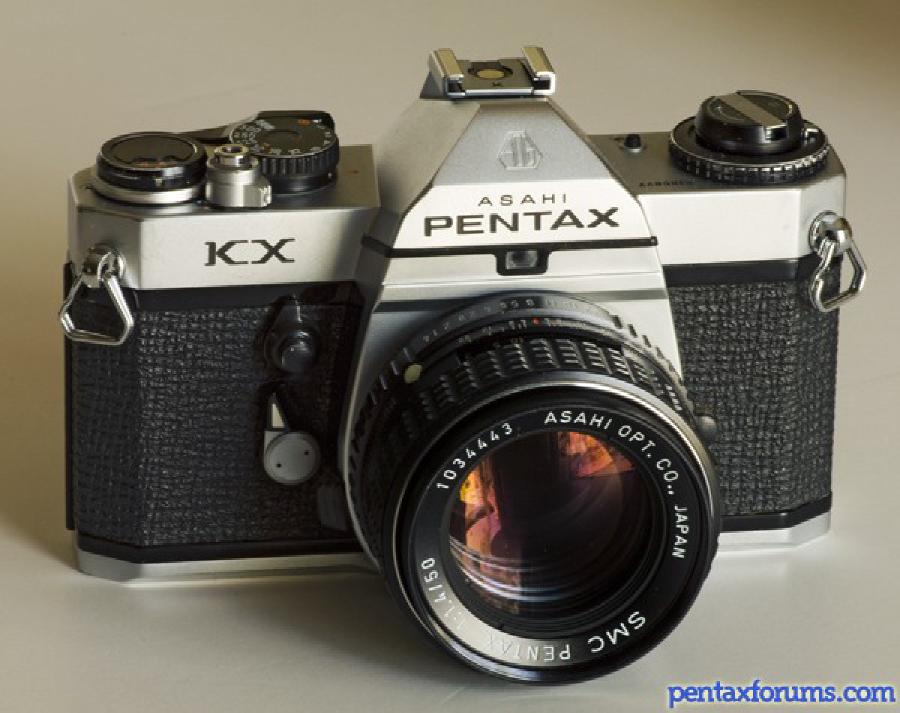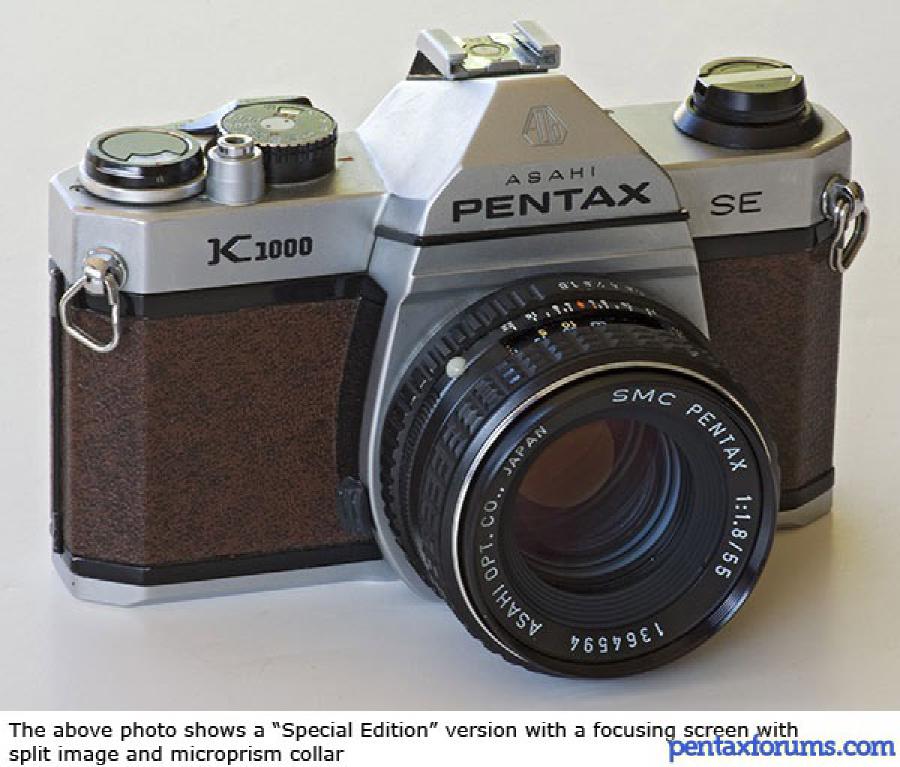I have, so far, been shooting nearly all of my film with the absolutely wonderful Ricoh KR-10 Super. This camera is excellent — fully manual control over the shutter down to 1/1000s of a second and up to 16s. Bulb mode for longer exposures and accepting a cable release. ISO settings from 12 through to 3200 and adjustments from -2 to +2 stops. A relatively nice view finder, a self timer (that still works on my body!), and a fairly sturdy body. There is truly very little to complain about!
However, it is human to dream. There are some other cameras that have caught my eye as of recent that seem just as lovely if not more so than the Ricoh. I have, perhaps sensibly, limited my wandering eyes to only those cameras that will accept the lens ecosystem I have already dumped several paychecks into: the Pentax K-Mount. This does, unfortunately, mean I must turn away from the Pentax Spotmatic line which use the M42 Screw Mount. Although adapters exist to use M42 lenses on K-Mount bodies, the reverse does not exist due to restrictions on flange distances. This is very sad, as the Spotmatic lineup is both astoundingly beautiful and astoundingly cheap (for some bodies).
My requirements, beyond accepting my exists lenses, may seem familiar. Manual operation, cable release, a fairly quick shutter… an outside observer would point out I have all of this and more with the Ricoh. Outside observer be damned! Let’s look at the lineup:
Pentax MX
The Pentax MX is almost certainly the camera I would buy next. Released in 1976, it is small, lightweight, robust, and built to last. It is, in some sense, the step up from the two camera’s below, with slightly better viewfinder, slightly smaller form factor, and general minor improvements throughout. Speaking of the viewfinder, the MX has the widest viewfinder of any Pentax SLR, at 0.97, meaning a full 97% of the exposed frame is visible in the viewfinder. There are several over niceties — the light meter is LED based rather than needle based, there is an aperture peek within the viewfinder using some optical trickery, the self timer operates fully mechanically — but the other major selling point to me is the depth of field preview, which is something the Ricoh is missing. The only downside I can find is the apparently tremendously stiff shutter speed selector wheel, which I suppose I would have to learn to live with. Overall, the MX seems like a terrific body that is otherwise overlooked in favor of the K1000 (see below).
Pentax KX
Not to be confused with the DSLR Pentax K-X, the KX is similar to the MX, although released two years earlier. It was Pentax’s first step into this new line of SLRs, being the oldest of the Pentax cameras in this post, and hence comes with all the growing pains of one might expect. The KX is a little larger than the MX, although the build is still all metal and hence sturdy. The shutter is exactly the same as the MX, 1/1000s through 1s with bulb exposure, but the KX also offers a few extra features. The main one would be mirror lock-up, the only camera here that has the feature. This allows for the mirror to be moved aside before the shutter is open, rather than all at once. This can reduce the shake that comes with the mirror movement (something I notice for certain shutter speeds on the Ricoh!). In exchange, the KX can be a little more expensive, but hunting for deals it seems they can go for a similar price as the MX.
Pentax K-1000
Finally, the Pentax K-1000. This camera has gathered a cult following. Although first released in 1976, the K-1000 was produced through until the early 1990s. While you might expect the massively larger supply of K-1000s to push the price down, this body is usually more expensive than either of the above two, mainly because of the demand. I, for one, cannot understand why when the K-1000 is a stripped back version of the KX, and is also lacking features compared to the MX!
The shutter range has the same speeds, 1/1000s through 1s and bulb. The light meter is exactly the same as the KX, being a needle rather than LED based as in the MX. There is no mirror lock-up, like in the KX. There is not self timer, and no depth of field preview (offered in both the KX and MX). It is physically larger than the MX, and typically has a slightly lower build quality than either of the above cameras (although being all metal it is still excellent). All of this, combined with the higher price, makes this an unappealing option compared to the KX or MX. Still, the K-1000 is seen as the quintessential example of its class of Pentax SLRs, so that’s nothing to sniff at.


